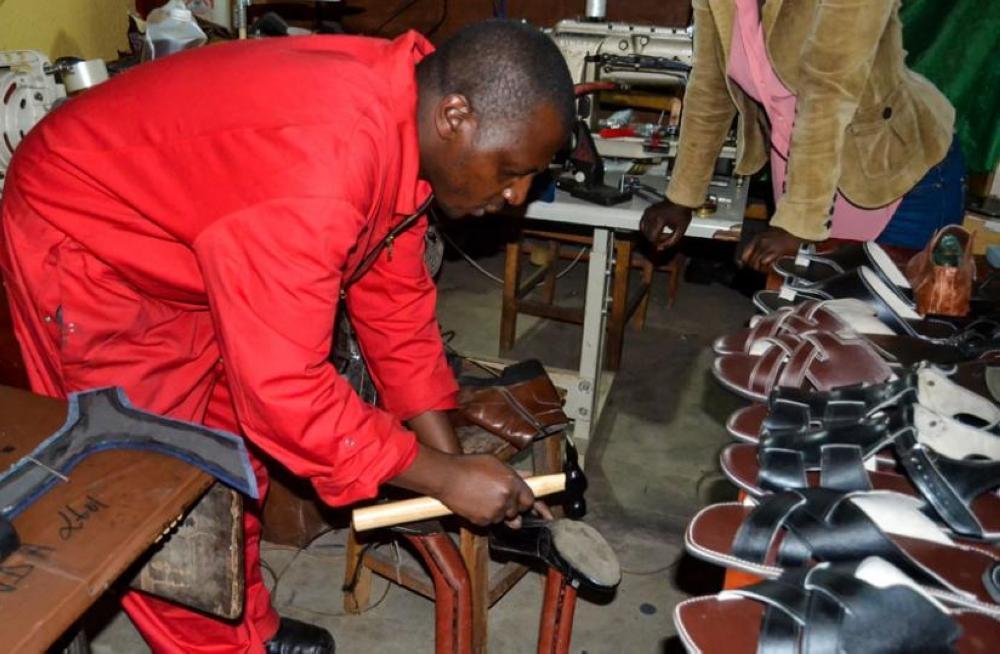Africa-Press – Rwanda. Rwanda’s production of raw hides and skins is projected to increase eight times by 2030, from the current 6,000 tonnes, The New Times has learnt.
The increase will be driven by government-led interventions designed to enhance livestock quality and raw hides and skins yield, according to the Ministry of Trade and Industry.
The current production generates about Rwf4 billion per year. The production of raw hides and skins is projected to increase to 48,000 tonnes, which will need to be processed.
Currently, the country has only one small-scale tannery, Nova Leather, which is located in Huye Industrial Park. The tannery processes less than five per cent of the locally available hides and skins, according to Prudence Sebahizi, the Minister of Trade and Industry.
To address this issue, the government is planning to establish a new tannery park within two years, he said.
“Recognising the opportunity to transform this sector, plans are underway to establish a modern green leather tannery plant. This tannery park aims to accelerate domestic value addition for raw hides and skins,” Sebahizi told The New Times.
An area of about 20 hectares has been identified in Bugesera District where the tannery park will be built, he said.
“We are mobilizing the required budget, starting with establishing an effluent treatment plant and other basic infrastructures, which are prerequisite for potential investment attraction into the industry. We are doing this, while also engaging investors who have vast experience in the field,” Sebahizi said.
He explained that the proposed tannery is expected to produce high-quality finished leather, primarily for export, while also serving the domestic market.
At full production capacity, it is projected to manufacture nine million square feet of finished leather annually.
Sebahizi also noted that the government had secured support from the African Development Bank (AfDB) to strengthen the leather industry.
“This support includes enhancing the production capacities of leather processing small and medium enterprises (SMEs) along the leather manufacturing value chain and capacity building for key actors, such as vocational training institutions, skin and hide collectors, and collection centres,” he highlighted.
Due to the lack of domestic transformation capacity, Rwanda’s high-quality raw hides and skins are currently fully exported to Kenya, Uganda, and the global market.
“Studies have identified Rwandan raw hides and skins as among the best in quality, not only in Africa but globally,” said the minister.
“If fully developed and enabled to process 100 per cent of the raw hides and skins produced domestically, the sector could potentially generate up to $430 million in annual revenue,” he said.
Rising demand highlights the need for local processing
Germaine Mukashyaka, an entrepreneur with a company that makes leather products, said that these products are expensive due to importing finished hides and skins.
“Since there is not enough tannery capacity in Rwanda, raw hides and skins are exported. As producers of leather products, we have to import tanned hides and skins at a high price,” Mukashyaka said.
“As a result, we sell our goods at higher prices. The tanned hides and skins are still expensive yet raw hides and skins are sold at giveaway prices in Rwanda.”
Marie Jeanne de Chantal Umuhorakeye, who owns a processing company that manufactures leather products such as belts and shoes, notes the growing demand in Rwanda.
“The demand for hides and skins is increasing as the Made in Rwanda initiative continues to grow,” Umuhorakeye said.
In November last year, Rwanda temporarily suspended an 80 percent development levy it had imposed on raw hides and skins exported beyond the East African Community (EAC) in 2015. The removal of the levy will be in effect until November 2026
“The suspension of 80 per cent of the levy has opened up opportunities for customers outside the EAC, adding value to hides and skins,” Umuhorakeye said.
“This development is encouraging former dealers to return to the business. Farmers who raised cattle primarily for milk and meat production often found that hides were undervalued,” she explained.
She emphasised the need for more tanneries to support the increasing production.
For More News And Analysis About Rwanda Follow Africa-Press






